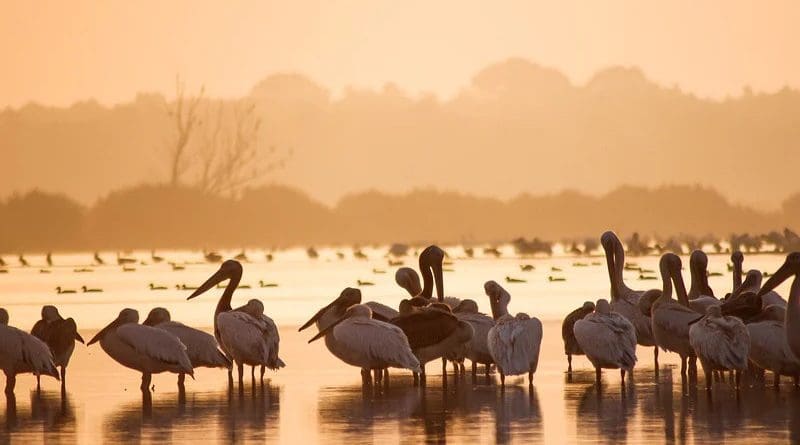Climate Change Threatens Wetlands – OpEd
The wetlands of the world are being threatened by global warming. The plant and animal communities surviving on these saturated and seasonally saturated soils are diminishing.
The warning comes from the United Nations Environmental Programme (UNEP). Global warming is causing polar ice to melt and sea levels to rise. This in turn is leading to shallow wetlands being swamped and some species of mangrove trees being submerged and drowned. Some scientists forecast that climate change will lead to the disappearance of entire island nations.
Yet at the same time, other wetlands — estuaries, floodplains, and marshes — are being destroyed through drought. There is still much to be learned about the impact of climate change on weather patterns. The estimated global area covered with wetlands is 12.8 square million kilometres. Today, half of the world’s wetlands have been destroyed over the last 100 years.
In the Philippines, a staggering 80 per cent of coastal wetlands have been drained, degraded, or destroyed in just 30 years. Military action, too, can be a significant factor in wetland decline. Exercises frequently cause immense damage, while wars create the kind of havoc to people and the environment that is being witnessed in the marshes of southern Iraq.
Conversion of swamps, marshes, lakes and floodplains for commercial development, drainage schemes, extraction of minerals and peat, over fishing, tourism, siltation, pesticide discharges from intensive agriculture, toxic pollutants from industrial waste, and the construction of dams and dikes, often in an attempt at flood protection, are major threats to wetlands everywhere.
According to UNEP, alterations in the climatic pattern will have far reaching, deleterious consequences on the health of wetlands and their dependent life forms.
Climatic changes may bring about changes in hydrological regimes, in the pattern of evaporation, biogeochemical cycles, the cycling of nutrients and suspended particles. Without wetlands, the coastal, inland and high altitude areas will all have to bear the consequences equally. As for lakes and streams, a climate change would result in the reduction of the polar ice cover, decreased availability of dissolved oxygen in deep water, and an increase in the frequency of extreme events, such as floods in some areas and drought in others.
Amphibians and reptiles that depend on wetlands are the first to be endangered as temperature increases as these animals who are sensitive to heat would find it difficult to adjust to prolonged spells of heat. Some of them have already disappeared which has disturbed the food chain and is affecting those placed higher in the food chain.
Likewise, as parasites are unable to procreate in cold environmental conditions, fewer frost days could increase the incidence of diseases and epidemics to an unprecedented level.
The animals in the polar caps also suffer. Because higher global temperatures would undoubtedly decrease the ice cover and ice thickness in the polar regions, and non-polar glacial retreat would be favoured.
Consequently, wildlife in the polar regions such as polar bears, arctic foxes, among others, will be affected. Fishes are also on the list to hard hit by global warming. Even though some fish species respond to higher temperatures by showing rapid growth, nonetheless, rapid growth demands more food, places to live and the chance of diseases escalates.
Wetland-dependent species that do not have excellent mobility will face extinction if environmental conditions change beyond their tolerable limits. Even those with greater mobility will also be affecter; for example, cold water fishes would be restricted in their range while warm water fishes would expand their range.
Low-lying countries are in fact starting to feel the effects of global warming now. Many are experiencing rise in sea level and that mangroves are dying in low lying wetlands.
Flood plains and swamps in the low-lying regions are being displaced by saline habitat due to cumulative effects of the salt water intrusion, intense rainfall, and storm surges. Plant communities that cannot tolerate high salinity and inundation become replaced with mangroves and other salt-tolerant plants. This is being felt in Asia today.
At the Candaba swamps of the Philippines birdlife and migration are being adversely affected. Changes are occurring in the staging, wintering and breeding sites for bird species that migrate continent to continent, and even those migrating within country.

